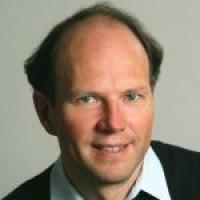SystemX Affiliates: login to view related content.

GPS has transformed navigation but unfortunately does not work in indoor or dense urban environments. The alternative, inertial navigation, is either too inaccurate or too large, power hungry, and costly in all but niche applications.
Gyroscopes are responsible for direction in inertial sensors. Since even small angular offsets can rapidly add up to large location errors, significantly improved gyroscope accuracy is the key to precise indoor navigation.
I will describe a prototype gyroscope with tactical grade performance. Unlike state-of-the-art solutions, the device does not rely on exotic fabrication technology or trimming, and both its size and power dissipation are comparable to existing mobile solutions.
How is this possible? Sensors, in general, compare their input to a reference. A thermometer compares its input to a reference temperature and reports the ratio. Gyroscope sensors have a huge advantage: their input is rate, degrees per second, also known as frequency. Frequency is the physical quantity that we can synthesize and measure with highest accuracy. While ppm-level precision is out-of-the-question for most properties, it is easily achieved for frequency.
Why then are gyroscopes not just as accurate as frequency sources? Oddly, present MEMS gyroscopes immediately turn frequency into force, then displacement, capacitance, voltage. Not only are these quantities difficult to measure with high accuracy, the scaling factors of all these transformations are subject to a myriad of fabrication and environmental variations. Not surprising that present gyroscopes suffer from a few errors.
The path to good gyroscopes is to measure frequency directly, without performance compromising detours. In this presentation, I will show you how.
Dr. Boser received a diploma in Electrical Engineering from the Swiss Federal Institute of Technology (ETH), Zurich, Switzerland, and his M.S. and Ph.D. in EE from Stanford University, 1985 and 1988, respectively. Prior to joining the faculty of EECS at UC Berkeley in 1991, he was a member of the technical staff of AT&T Bell Laboratories in Holmdel, NJ. Dr. Boser has been the Editor of the IEEE Journal of Solid-State Circuits and President of the IEEE Solid-State Circuits Society. He is a co-founder of SiTime, a company commercializing MEMS resonators to replace quartz crystals as precision timing references. His research focuses on sensors and sensor interface electronics.


